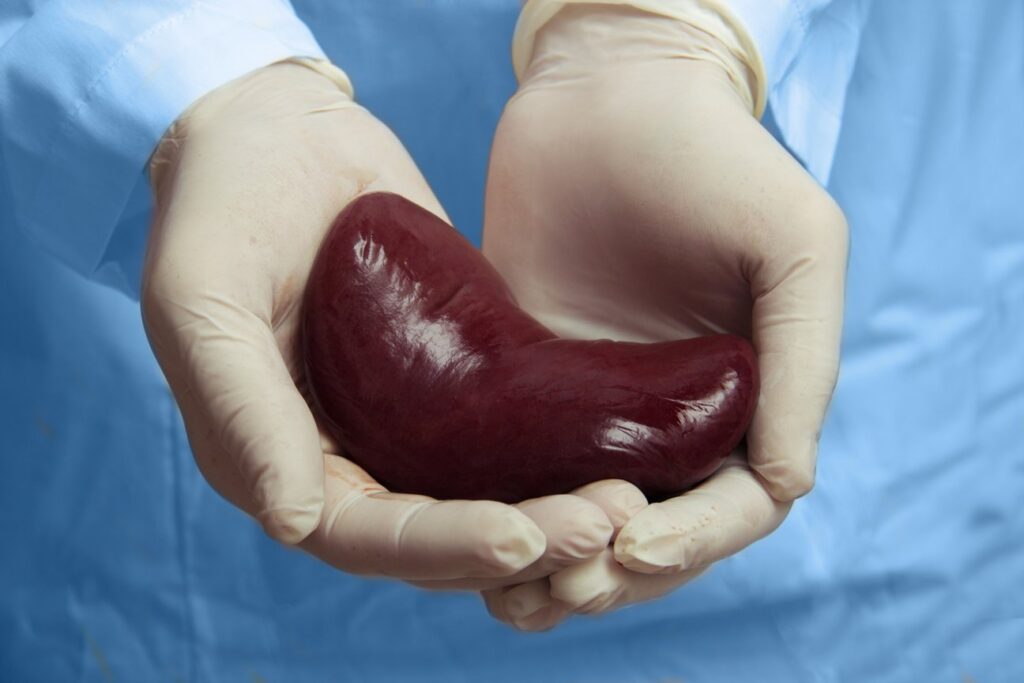
Study identifies a major role for immune cells called natural killer cells in organ rejection

Immune cells called natural killer cells contribute to organ rejection after transplantation because they miss “self” proteins on donor cells, according to a study appearing in an upcoming issue of JASN. A better understanding of this process may help clinicians prevent and treat organ rejection.
Transplanted organs are recognized by the immune system of the recipient as foreign or non-self, which leads to rejection of the organs. Rejection is prevented or treated with drugs that suppress the immune system, mostly targeting T immune cells; however, rejection can still occur despite such treatment, not only because T cells may not be completely suppressed by the therapy, but also because of antibodies and “natural killer cells” that target the donor tissue.
Natural killer cells play an important role in the human immune system, as they are involved in recognizing and killing harmful cells such as tumor cells. These harmful cells sometimes attempt to escape immune detection by decreasing MHC proteins, which are proteins expressed on cells that allow T cells to bind to, recognize, and tolerate itself. This mechanism renders the harmful cells invisible to T cells, but not to natural killer cells. Through their KIR receptors, natural killer cells can detect the absence of these MHC proteins and therefore kill the harmful cells. This constitutes a very important defense mechanism.
In transplantation, the donor cells in the transplanted organ are not escaping immune detection by decreasing MHC expression, but these donor cells express different MHC proteins than the recipient. The natural killer cells of the recipient therefore miss the “self” MHC on these donor cells and become active.
“This is exactly what we found in our study of 924 kidney transplantations: that the ‘missing self’ predicted by genetic analyses of the MHC molecules of donors and recipients, and the genetically determined KIR repertoire of the recipients, is predictive of rejection in kidney transplant biopsies,” said senior author Maarten Naesens, MD, PhD, of KU Leuven, in Belgium. “Therefore, our study shows that genotyping the donors and recipients not only for MHC (as is done in routine clinical practice), but also for KIR, will enable us to assess the presence or absence of ‘missing self,’ and improve the risk assessment of kidney transplant rejection.
“Furthermore, our findings demonstrate the importance of these natural killer cells after transplantation and suggest new ways to prevent or treat kidney transplant rejection,” added lead author Jasper Callemeyn, MD, also of KU Leuven.
Study co-authors include Aleksandar Senev, MD, PhD, Maarten Coemans, PhD, Evelyne Lerut, MD, PhD, Ben Sprangers, MD, PhD, Dirk Kuypers, MD, PhD, Alice Koenig, MD, PhD, Olivier Thaunat, MD, PhD, and Marie-Paule Emonds, MD, PhD.
Disclosures: This work was supported by a project grant from the Research Foundation Flanders.
Journal Reference:
- Jasper Callemeyn, Aleksandar Senev, Maarten Coemans, Evelyne Lerut, Ben Sprangers, Dirk Kuypers, Alice Koenig, Olivier Thaunat, Marie-Paule Emonds, Maarten Naesens. Missing Self–Induced Microvascular Rejection of Kidney Allografts: A Population-Based Study. Journal of the American Society of Nephrology, 2021; ASN.2020111558 DOI: 10.1681/ASN.2020111558